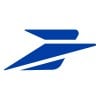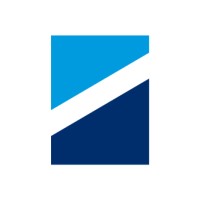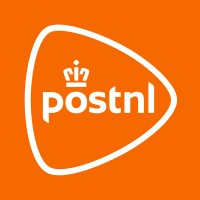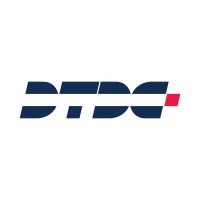
La Poste Groupe Company Cyber Security Posture
lapostegroupe.comPremier réseau commercial de proximité en France, le groupe La Poste est organisé en 4 branches d’activité : Services-Courrier-Colis, Banque et Assurance, Distributeur physique et numérique, GeoPost/DPDGroup pour l'international. Présent dans plus de 63 pays, sur 5 continents, il a réalisé un chiffre d’affaires de 34,1 Mds€ en 2023. En 2021, le groupe La Poste est devenu la première entreprise publique à adopter la qualité de société à mission. 4 engagements sociétaux sont désormais inscrits dans ses statuts : • Contribuer au développement et à la cohésion des territoires • Favoriser l’inclusion sociale • Promouvoir un numérique éthique, inclusif et frugal • Œuvrer à l’accélération de la transition écologique pour tous Le groupe La Poste, avec plus de 232 000 collaborateurs, naturellement et historiquement engagé pour la société, se mobilise pour rendre ses activités plus durables au regard des enjeux sociétaux et environnementaux, et pour faciliter la transition écologique de tous les Français.
LPG Company Details
la-poste-groupe
51683 employees
198852.0
none
Transportation, Logistics, Supply Chain and Storage
lapostegroupe.com
Scan still pending
LA _2941616
In-progress
Between 200 and 800
This score is AI-generated and less favored by cyber insurers, who prefer the TPRM score.
 LPG Global Score
LPG Global Score.png)

La Poste Groupe Company Scoring based on AI Models
| Model Name | Date | Description | Current Score Difference | Score |
|---|---|---|---|---|
| AVERAGE-Industry | 03-12-2025 | This score represents the average cybersecurity rating of companies already scanned within the same industry. It provides a benchmark to compare an individual company's security posture against its industry peers. | N/A | Between 200 and 800 |
La Poste Groupe Company Cyber Security News & History
| Entity | Type | Severity | Impact | Seen | Url ID | Details | View |
|---|
La Poste Groupe Company Subsidiaries

Premier réseau commercial de proximité en France, le groupe La Poste est organisé en 4 branches d’activité : Services-Courrier-Colis, Banque et Assurance, Distributeur physique et numérique, GeoPost/DPDGroup pour l'international. Présent dans plus de 63 pays, sur 5 continents, il a réalisé un chiffre d’affaires de 34,1 Mds€ en 2023. En 2021, le groupe La Poste est devenu la première entreprise publique à adopter la qualité de société à mission. 4 engagements sociétaux sont désormais inscrits dans ses statuts : • Contribuer au développement et à la cohésion des territoires • Favoriser l’inclusion sociale • Promouvoir un numérique éthique, inclusif et frugal • Œuvrer à l’accélération de la transition écologique pour tous Le groupe La Poste, avec plus de 232 000 collaborateurs, naturellement et historiquement engagé pour la société, se mobilise pour rendre ses activités plus durables au regard des enjeux sociétaux et environnementaux, et pour faciliter la transition écologique de tous les Français.
Access Data Using Our API

Get company history
.png)
LPG Cyber Security News
La Poste Groupe 2024 results
In a challenging macroeconomic context, the 2024 results are improving, driven by the diversification of La Poste.
Orange and La Poste partner
Orange and La Poste share the same net-zero carbon goal by 2040. Both companies have established more responsible practices to purchase circuits ...
AI in 2025: current initiatives and challenges in large enterprises
This whitepaper outlining the state of AI in large international enterprises. The idea of writing such a document emerged from a twofold observation.
La Poste Groupe at VivaTech 2025
As a major multi-activity group (parcels, bancassurance, digital, services), La Poste is showcasing its technological know-how and capacity ...
La Poste Groupe - First-half 2024 Results
La Poste Groupe's results held firm in an economic climate that remained very challenging. During the first six months of 2024, volumes for Mail - which since ...
French telecom company La Poste Mobile struggling to recover from ransomware attack
French mobile phone network La Poste Mobile is still struggling to recover from a ransomware attack that has crippled its administrative and ...
Welcome to the suppliers' area
La Poste Groupe is a real driver of trust for its partners. With more than €6 billion in purchases excluding tax, La Poste Groupe maintains special ...
Bouygues Telecom to buy La Poste Telecom for 950 million euros
Bouygues Telecom, the unit of French conglomerate Bouygues , said on Thursday it had signed an exclusivity agreement with La Poste Group to ...
Trusted Cloud Services: Docaposte, DS, Bouygues | Newsroom
NUMSPOT primarily targets French economic and institutional organizations that currently lack solutions meeting their needs : the financial ...

LPG Similar Companies

Hutchison Ports
THE WORLD’S LEADING PORT NETWORK We are Hutchison Ports. A network of over 30,000 employees, operating ports and terminals in over 26 countries in Asia, the Middle East, Africa, Europe, the Americas and Australasia. Our parent company is CK Hutchison Holdings Limited (CK Hutchison). We develop and

PostNL
Welcome! We are PostNL. Your favorite delivery service is what we want to be. Every day, over 35,000 colleagues work hard to achieve this goal, on your streets and in your neighborhood, in our sorting centers and depots, and at the office. On an average day, we deliver about 1.1 million packages and

Delhivery
#WeGoTheExtraMile | We are India’s largest fully integrated logistics provider, simplifying commerce with cutting-edge technology, world-class infrastructure, and unmatched expertise to deliver seamless supply chain solutions for businesses of all sizes. Comprehensive Solutions for Every Need ➡️E

Aramex
Founded in 1982, Aramex has emerged as a global leader in logistics and transportation, renowned for its innovative services tailored to businesses and consumers. As a listed company on the Dubai Financial Market (since 2005) and headquartered in the UAE, our strategic location facilitates extensive

Kerry Logistics
Kerry Logistics is an Asia-based, global 3PL with a highly diversified business portfolio and the strongest coverage in Asia. We offer a broad range of supply chain solutions from integrated logistics, international freight forwarding (air, ocean, road, rail and multimodal), e-commerce and express t

DTDC Express Limited
DTDC Express Ltd is one of India’s leading integrated express logistics company offering domestic and international services. DTDC offers a comprehensive range of technology-enabled logistics services, serving a wide spectrum of customers across diverse industry verticals. Today, DTDC operates Ind

Frequently Asked Questions
Explore insights on cybersecurity incidents, risk posture, and Rankiteo's assessments.
LPG CyberSecurity History Information
How many cyber incidents has LPG faced?
Total Incidents: According to Rankiteo, LPG has faced 0 incidents in the past.
What types of cybersecurity incidents have occurred at LPG?
Incident Types: The types of cybersecurity incidents that have occurred include .
Incident Details
What are the most common types of attacks the company has faced?
Additional Questions
What Do We Measure?
















Every week, Rankiteo analyzes billions of signals to give organizations a sharper, faster view of emerging risks. With deeper, more actionable intelligence at their fingertips, security teams can outpace threat actors, respond instantly to Zero-Day attacks, and dramatically shrink their risk exposure window.
These are some of the factors we use to calculate the overall score:
Identify exposed access points, detect misconfigured SSL certificates, and uncover vulnerabilities across the network infrastructure.
Gain visibility into the software components used within an organization to detect vulnerabilities, manage risk, and ensure supply chain security.
Monitor and manage all IT assets and their configurations to ensure accurate, real-time visibility across the company's technology environment.
Leverage real-time insights on active threats, malware campaigns, and emerging vulnerabilities to proactively defend against evolving cyberattacks.




